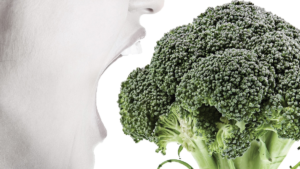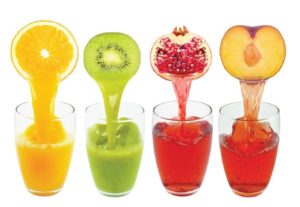Supplements/Ergogenic Aids
Time To Eat Your Compost
America’s massive pile of food waste makes up an estimated 30%–40% of the nation’s food supply, or about 1,200–1,400 calories per person each day, says the U.S. Department of Agriculture. The perils of this ugly food trend are many: added costs to grocery budgets, global-warming methane gas production as food decomposes in landfills, and waste of resources used to grow and transport the food.
Question of the Month
It turns out that a trip to the supermarket can be a real head-scratcher for choosing healthy foods. The International Food Information Council Foundation’s 2017 Food & Health Survey hints that many Americans are flummoxed about what counts as good-for-you food. Nearly 80% of survey respondents said they face plenty of conflicting information about what foods to eat and which to avoid—and more than half of consumers are second-guessing what they place in their grocery carts.
Pass the Tofu, S’Il Vous Plaît
To stay on good terms with the scale, it might be a good idea to trade T-bone for tempeh more often, according to a June 2017 analysis in the Journal of the American College of Nutrition. Study participants who followed a calorie-controlled vegetarian diet of legumes, grains, nuts, fruits, veggies and just a small amount of dairy shed almost twice as much body weight as those on a more conventional, calorie-equivalent diet that contained meat. The plant-heavy diet was also more effective at reducing muscle fat, which improved blood sugar control and insulin sensitivity.
Not All Vitamin D Is Created Equal
Now that sweater weather has arrived for much of the country, working to keep up vitamin D levels becomes even more important. After all, the sunshine vitamin is not only important for bone health but has also been tied to a lower risk for certain cancers, heart conditions
and depression.
Why Modern Diets Are Lacking
Nutrition is a hot topic. It seems like every day there’s a claim about a miracle food or a wonder supplement. But how is the modern diet deficient? Why is it so poor in nutrients?
Kamal Patel, MPh, MBA, director of Examine.com and a nutrition researcher with an MPh and MBA from Johns Hopkins University, compares today’s diets with those of a hundred years ago.
Eating the Same Things
Protein Supplements: Which “Whey” to Go?
Fitness professionals working with enthusiastic resistance-training clients inevitably face questions about protein supplementation.
Protein supplements are some of the most common and most popular nutritional products on the market today (Pasiakos, Lieberman & McLellan 2014). But with all this abundance, it’s easy to get lost in the colorfully stocked shelves and become confused about which types to buy, when to use them and how much to take.
Understanding Overeating
They hear it every day: “Eat less and move more.” Yet, despite their best efforts, many clients fail to limit their caloric intake. Perhaps there’s a better way: Rather than pushing clients to eat less, we should be asking why they struggle with overconsumption.
Disordered Eating: When Eating Isn’t Simple
Disordered eating is more prevalent than people realize and it’s crucial for fitness professionals to know how to spot and identify symptoms.
Grilled-Salmon Tacos With Mango Black-Bean Salsa
By Mary Saph Tanaka, MD, FAAP
Salmon Tacos
2 6-ounce salmon filets
8 corn tortillas
1 lime, cut into wedges
olive oil
Mexican Spice Marinade
1 t ground cumin
1 t dried onion
1 t ground oregano
½ cup of fresh cilantro
Life Hack for Tastier, Easier Meals: Sous Vide Cooking
Want to experience the tender deliciousness of a cut of meat or fish from a high-end restaurant without leaving your home or laboring in the kitchen for hours? If so, sous vide (pronounced sue-veed) cooking is right for you. For anywhere from under $100 to $300 for the sous vide precision cooker, plus a few dollars for plastic freezer bags and food cost, you can have a gourmet meal on the table in a couple of hours, with mere minutes spent in preparation.
What Is a Lectin-Free Diet
As the gluten-free diet fad winds down, a “lectin-free” diet may become the next big trend. Fueling interest is a new book called The Plant Paradox by Steven R. Gundry (Harper Wave 2017), which claims that lectins in whole grains, legumes, nightshade vegetables (tomato, pepper, eggplant, potatoes), fruit, dairy and eggs are the enemy of anyone trying to lose weight and/or optimize health, according to a report on the Food Insight website.
Kids Bombarded With Junk Food Ads
More than 75% of food-related television ads that kids see promote high-calorie, unhealthy foods and drinks, according to a UConn Rudd Center study published in June. While exposure to such ads has generally declined since a 2007 self-regulation initiative aimed at reducing advertising of unhealthy food targeting kids, children are still seeing many more ads for candy, sugary drinks and fast-food restaurants than they are for healthy foods. This study looked only at television advertising.
Some Home-Delivered Kits May Not Be Safe to Eat
The popularity of home-delivery meal kits is on the rise, at least in part because of a hot startup economy and increasing consumer interest in cooking and eating food at home (though many still lack the time or know-how to do it).
Just to Be Clear, Saturated Fat Is Not Good for Heart Health
A presidential advisory from the American Heart Association released in June concluded strongly that lowering intake of saturated fat and replacing it with unsaturated fats—especially polyunsaturated ones—reduces cardiovascular disease rates. Studies indicate that this change would lower CVD rates by 30%, similar to the drop achieved by ubiquitous statin medications. Replacing saturated fats with polyunsaturated fats lowers levels of “bad” low-density lipoprotein cholesterol and triglycerides. Fat composition of commonly used oils is shown in the chart.
Juices Lack Many Benefits of Whole Fruit
Everybody should eat a diet high in fruits and vegetables, which are rich in fiber, vitamins and minerals—nutrients associated with improved health and longevity. And it’s tempting to believe these benefits extend to 100% fruit juice.
From Drab to Fab: Giving Veggies Snazzy Names Increases Consumption in Adults
Vegetable consumption is notoriously low: Just 13% of adults and about 5% of children eat the recommended servings of vegetables per day. Studies have pointed to one way to get kids to eat more veggies: giving vegetables cool names like “x-ray vision carrots” and “power punch broccoli.” A study published by JAMA Internal Medicine in June found that the tactic was equally effective in adults when vegetables were given “indulgent” descriptions such as “dynamite chili and tangy lime-seasoned beets” or “sweet sizzlin’ green beans and crispy shallots.”
Ask the RD: Do Ketogenic Diets Work for Athletes?
Question: What do you think about a ketogenic diet for athletes?
Does it really improve performance?
Emotional Eating Begins Early
Emotional Eating: Parents Pass It On to Their Kids
A tendency to eat for emotional reasons—such as when worried, annoyed or anxious—is an important contributor to excess weight gain. While emotional eating is a known cause of obesity, what turns people into emotional eaters is not as well understood.
Fruit and Vegetable Prescription Success
A small 10-week pilot study found that patients who received a fruit and vegetable “prescription” along with $30 tokens per week to spend on fruits and vegetables at a local farmer’s market reduced weight, waist circumference and cholesterol levels compared with a control group given a $30 gas card per week, reports the Cape Cod Times.
Can Cinnamon Fight the Epidemic of Prediabetes?
With rates of prediabetes and diabetes climbing, there is great interest in inexpensive interventions that can help to control blood sugar levels. Studies suggest that people who consume 1 g of cinnamon (just under ½ teaspoon) per day have a blood sugar reduction in line with the decrease from prescription drugs, Time magazine reported in April. How
cinnamon exerts these effects is an area of active investigation. Add cinnamon to oatmeal, yogurt, tea and applesauce to boost intake.


















